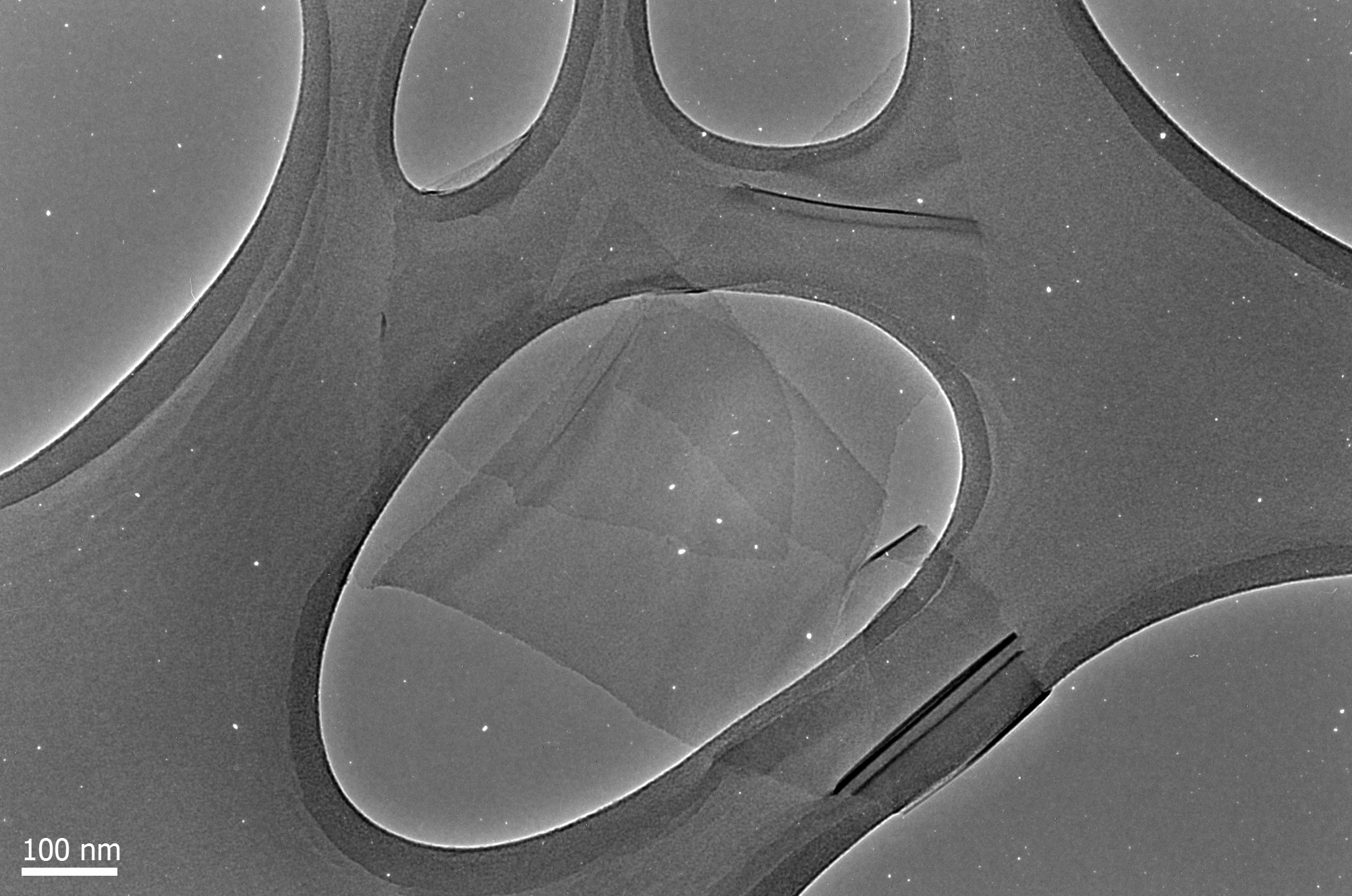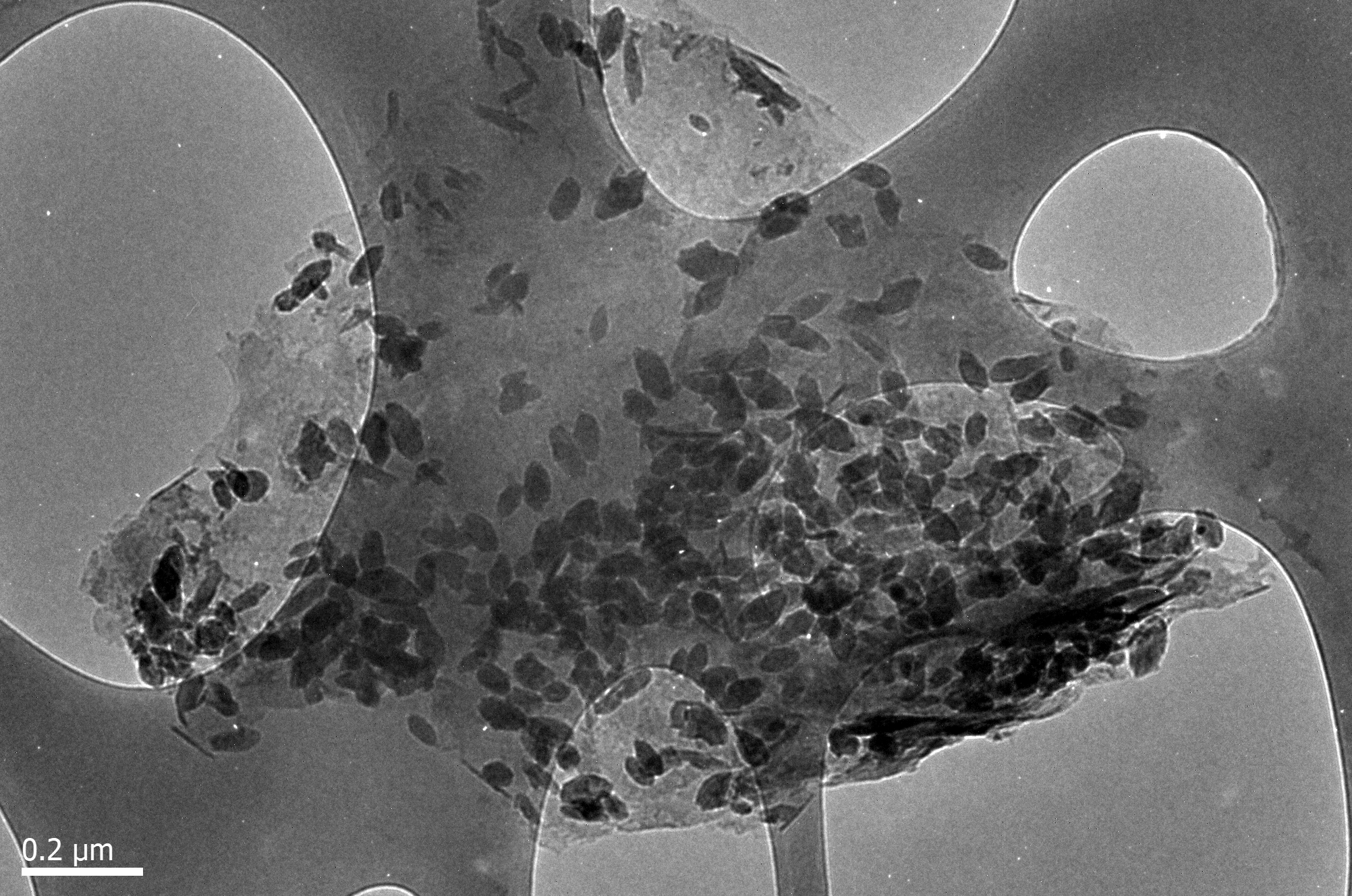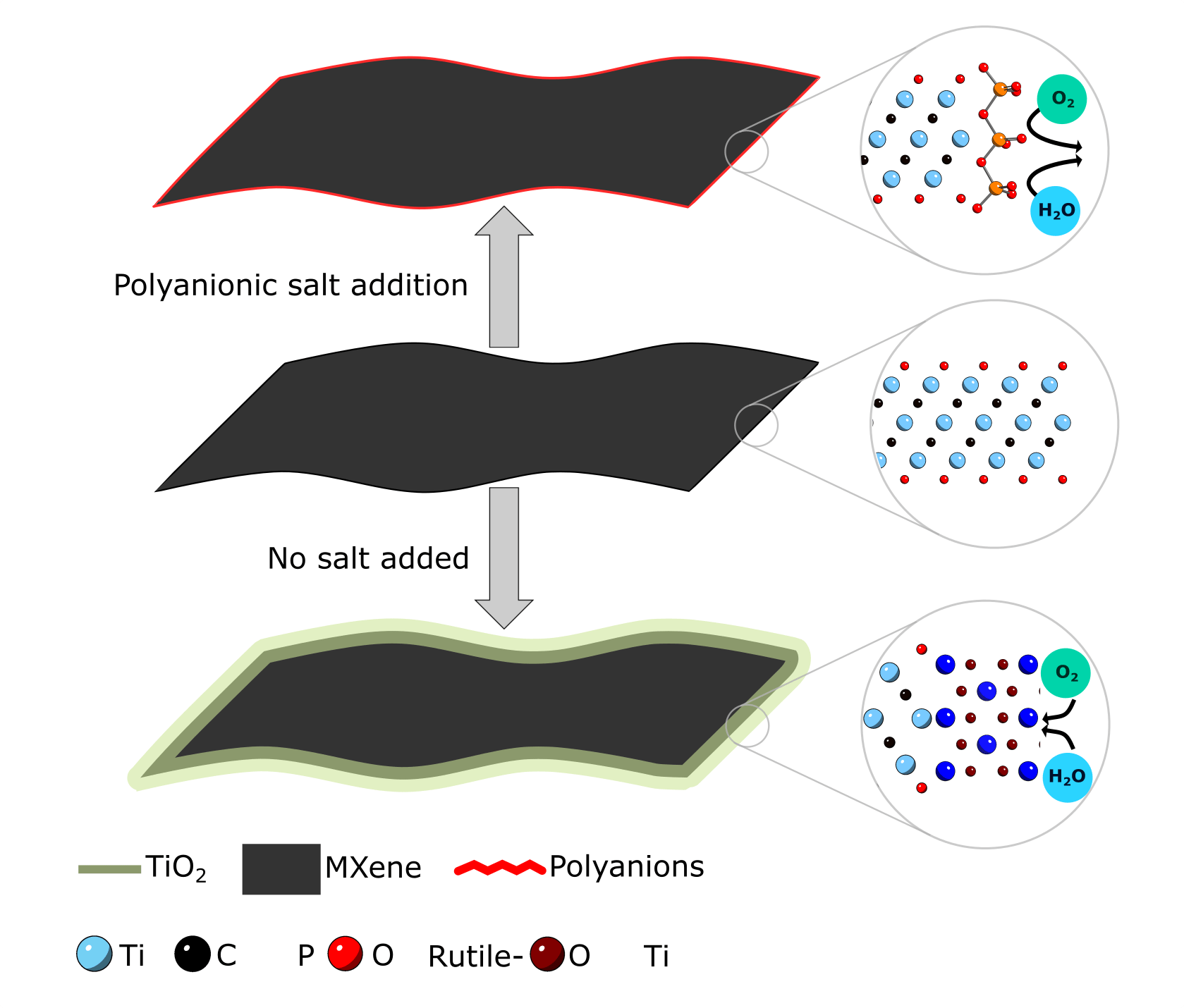A Dash of Salt Could Fortify MXene 'Super Materials' Against Oxidation

- Drexel Selects New, World-Class Life Sciences Building at 3201 Cuthbert Street for Medical Research Operations
- Breakthrough on Gene Therapy for Hereditary Spastic Paraplegia
- Drexel Environmental Collaboratory Releases Cross-Sector Findings on Severe Weather Recovery Challenges
- Drexel Launches the Manuel Stamatakis Center for Alternative Investments at the LeBow College of Business

By combining a common food and water additive, pholyphosphate salts, with MXene materials, researchers at Drexel have discovered a way to slow the oxidation process when they are exposed to water.
They can store electricity better than almost any material on Earth, block an onslaught of electromagnetic interference, and sniff out the faintest trace of toxins in the air, but MXenes, the latest super-material-in-waiting, have trouble with water. Like a rake left out in the rain, they oxidize, and quickly, when stored or mixed in water. It’s an issue of consequence, considering some of the most promising applications require combining MXene flakes in water to make things like conductive ink and spray coatings. A breakthrough, recently published by Drexel University researchers in a German chemistry journal, showing that a common water-softening additive can help to preserve the flakes in water, could be the key to its future viability.
These atomically thin, layered materials, which were discovered at Drexel in 2011, owe their exceptional abilities, in part, to their surface chemistry and physical structure. But the source of MXenes’ unique properties is also likely their weakness when it comes to oxidation, according to the research published by a team of researchers from Drexel’s College of Engineering.

“Oxidation of MXenes has always been a problem,” according to Varun Natu, a doctoral researcher in the College and a co-author of the paper “Edge Capping of 2D-MXene Sheets with Polyanionic Salts to Mitigate Oxidation in Aqueous Colloidal Suspensions,” which was published in the journal Angewandte Chemie. “The most common titanium carbide MXenes, show signs of oxidation when stored for a week or so in water; other chemistries oxidize within days.”
Oxygen is a problem, not only because it reacts with MXenes — like it would a rusty rake — but it also changes their surfaces chemistry and morphology, which ultimately diminishes their performance when it comes to tasks like passing and storing electricity.
Distinguished Professor Michel Barsoum’s group in the Department of Materials Science and Engineering, which was part of the team that discovered MXenes and has been exploring their applications, had been seeking a way to prevent MXenes from oxidizing in water for several years. Its breakthrough came after a related discovery showed how oxidation begins at the edges of the MXene sheets.
Barsoum’s team showed a few months ago, that while the MXenes' layers have a negative surface charge, the edges of the sheets actually have a positive charge. This discovery, plus the fact, established in the clay literature, that negative entities are attracted to the edges of the clay particles led to the breakthrough.

"When you dissolve polyphosphate salts in water, they dissociate into the long negatively changed chains of polyphosphates and positive entities or cations. The former are attracted to the positive MXene edges, cap them and shut down, or greatly reduce, the oxidation process. It is simple electrostatics. Once these chains sit at the MXene edges they block the direct contact of water and air reducing the rate of oxidation," said Natu.
Using advanced microscopy techniques available in the lab of co-author Mitra Taheri, PhD, Professor in the College, the researchers were able to show that the polyphosphate chains indeed were attracted to the positive edges. And capping the edges of the layers with an inert compound in this way effectively shields the reactive parts of the material from direct contact with water and/or oxygen, which substantially slows the oxidation process.
Armed with protective polyphosphate caps, MXene flakes in the study lasted more than a month in water exposed to air without any sign of oxidation.
“This discovery finally makes long-term storage of MXenes possible which can make its industrial scale processing viable,” Barsoum said. “Before our discovery the most common methods proposed were, drying the MXenes and storing them in a vacuum, storing under Argon atmospheres, using organic solvents to make MXene colloids or to store under liquid nitrogen. But all these methods are not cost effective, energy efficient or scalable. Making polyphosphate addition the best method to prevent oxidation to date.”
Barsoum’s group tested its theory with three different salts on two different MXene compositions, showing that a variety of molecules can be used effectively to cap the flakes. While Drexel researchers have already illuminated the possibility of using MXenes for applications in mobile technology, energy storage, wireless communication, water filtration and health care, this work could lead to advances in surface and edge engineering of MXenes to optimize them for these jobs and others. The team is also looking into similar methods for preserving MXenes in dried form, which would also broaden possibilities for its use.
In addition to Barsoum, Taheri and Natu, James L. Hart; a doctoral student in Drexel’s College of Engineering; Maxim Sokol, a post-doctoral researcher in the College; and Helen Chiang, a maste’rs student, participated in the research. It was supported by the National Science Foundation.
Read the full paper here: https://onlinelibrary.wiley.com/doi/abs/10.1002/anie.201906138In This Article
Contact
Drexel News is produced by
University Marketing and Communications.